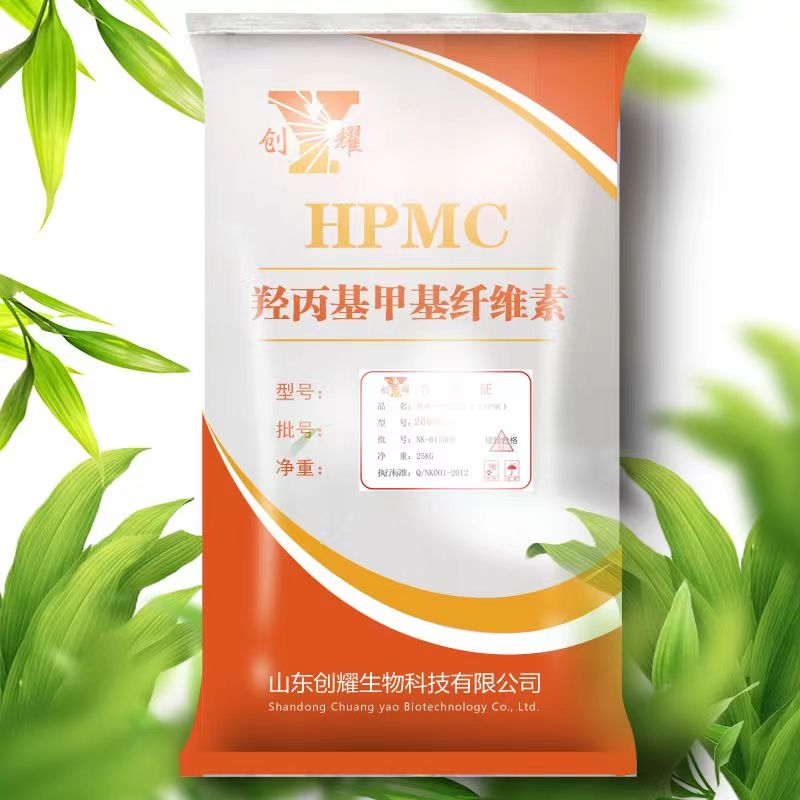Discussion on Hydroxypropyl Methyl Cellulose Ether (HPMC) for Dry Powder Mortar
HPMC is a non ionic type commonly used as a water retaining agent in dry mixed mortar, and is the most commonly used water retaining material in mortar.
The production process of HPMC is mainly a polysaccharide ether product produced from cotton fibers (domestic) through alkalization and etherification. It has no electric charge in itself and does not react with charged ions in the cementitious material, resulting in stable performance. The price is also lower than other types of cellulose ether, so it is widely used in dry mixed mortar.
Hydroxypropyl methyl cellulose function: It can thicken the freshly mixed mortar to have a certain wet viscosity and prevent segregation. (Thickening) Water retention is also the most important characteristic, helping to maintain the amount of free water in the mortar, thereby allowing more time for the cementitious material to hydrate after mortar construction. (Water retention) It has an air entrainment property and can introduce even and fine air bubbles to improve the workability of mortar.
The higher the viscosity of hydroxypropyl methyl cellulose ether, the better the water retention performance. Viscosity is an important parameter of HPMC performance. Currently, different HPMC manufacturers use different methods and instruments to determine the viscosity of HPMC, including Haake Rotovisko, Hopper, Ubbelohde, and Brookfield.

For the same product, the viscosity results measured by different methods vary greatly, and some even have multiple differences. Therefore, when comparing viscosities, it is important to perform between the same test methods, including temperature, rotor, etc. For particle size, the finer the particles, the better their water retention. After the large particles of cellulose ether contact with water, the surface immediately dissolves to form a gel that wraps the material to prevent water molecules from continuing to penetrate. Sometimes, they cannot be uniformly dispersed and dissolved even if stirred for a long time, forming a turbid flocculent solution or agglomeration. It greatly affects the water retention of its cellulose ether, and solubility is one of the factors in selecting cellulose ether.
Fineness is also an important performance index of methyl cellulose ether. The MC used for dry powder mortar requires powder, low water content, and a particle size of 20% to 60% less than 63 um. The fineness affects the solubility of hydroxypropyl methyl cellulose ether. Coarse MC is usually in the form of granules, which can easily be dissolved in fractions without caking in water, but the dissolution rate is very slow and is not suitable for use in dry mortar.
In dry mortar, MC is dispersed between cementitious materials such as aggregates, fine fillers, and cement. Only a sufficiently fine powder can prevent methyl cellulose ether agglomeration during mixing with water. When MC is dissolved and agglomerated with water, it is difficult to dissolve in dispersion. MC with coarse fineness not only wastes, but also reduces the local strength of the mortar. When such dry powder mortar is constructed in a large area, the curing speed of the local dry powder mortar is significantly reduced, resulting in cracking due to different curing times. For sprayed mortar constructed by machinery, due to the shorter mixing time, the requirements for fineness are higher. In general, the higher the viscosity, the better the water retention effect. However, the higher the viscosity, the higher the molecular weight of MC, and the corresponding decrease in its solubility, which has a negative impact on the strength and workability of mortar.
The higher the viscosity, the more obvious the thickening effect on the mortar, but not in direct proportion. The higher the viscosity, the more viscous the wet mortar will become. During construction, it shows high adhesion to the scraper and the substrate. However, it is not helpful to increase the structural strength of the wet mortar itself. That is, during construction, the performance of anti sag performance is not obvious. On the contrary, some modified methyl cellulose ethers with medium to low viscosity have excellent performance in improving the structural strength of wet mortar.
The water retention of HPMC is also related to the temperature at which it is used, and the water retention of methyl cellulose ether decreases with increasing temperature. However, in practical material applications, dry powder mortar is often applied to hot substrates at high temperatures (above 40 degrees Celsius) in many environments, such as external wall putty plastering in the summer when there is sunlight, which often accelerates the solidification of cement and the hardening of dry powder mortar. The decrease in water retention leads to a clear sense that both workability and cracking resistance are affected, and reducing the impact of temperature factors becomes particularly critical under such conditions.
In this regard, methyl hydroxyethyl cellulose ether additives are currently considered to be at the forefront of technological development. Despite increasing the amount of methyl hydroxyethyl cellulose (summer formula), the workability and cracking resistance still cannot meet the needs of use. Through some special treatments for MC, such as increasing the etherification degree, it can maintain a better water retention effect at higher temperatures and provide better performance under harsh conditions.
The amount of HPMC should not be too high, which will increase the water demand of the mortar, and also cause adhesion to the trowel and long setting time, affecting the workability. Choose HPMC with different viscosity for different mortar products, and do not casually use HPMC with high viscosity. Therefore, although hydroxypropyl methyl cellulose products are good, they are only good when used well. Choosing the appropriate HPMC is the primary responsibility of enterprise laboratory personnel. Currently, there are many illegal distributors who are compounding HPMC, which is of relatively poor quality. When selecting a certain type of cellulose, laboratories should conduct experiments to ensure the stability of mortar products, and do not seek cheap prices, causing unnecessary losses.
{aspcms:comment}





